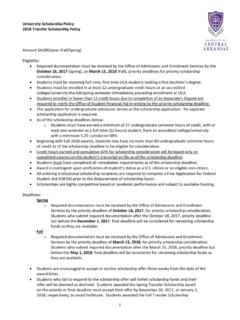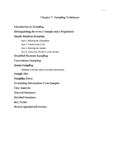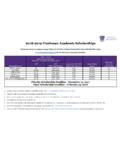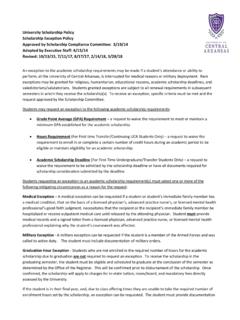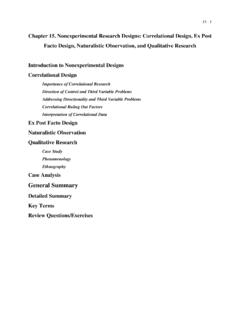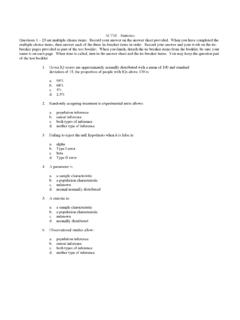Transcription of Chapter 2. Ethical Principles of Research Historical ...
1 2-1 Chapter 2. Ethical Principles of ResearchHistorical Examples of Research With Ethical ConcernsTuskegee Syphilis StudyThe Milgram and Zimbardo StudiesResearch With Human Participants: Ethical GuidelinesEthical Principles and Code of ConductInformed Consent: The Right to KnowSample Consent Form for a Student Research Project On the Use of DeceptionField Research and EthicsRegulation of Human ResearchResearch With Children and Mentally Challenged: Ethical GuidelinesThinking Critically About Everyday Information Research With Nonhumans: Ethical GuidelinesProfessional Behavior of the InvestigatorTesting ParticipantsIntegrity of the DataPlagiarism and PublicationCase AnalysisGeneral SummaryDetailed SummaryKey Terms Review Questions/Exercises2-2 Historical Examples of Research With Ethical ConcernsTuskegee Syphilis StudyOn the afternoon of May 16, 1997, President Clinton made a formal apology to Mr.
2 Shaw, Mr. Pollard, Mr. Howard, Mr. Simmons, Mr. Moss, Mr. Doner, Mr. Hendon, and These eight African American men were the remaining survivors of a medical Research study sponsored by the United States government. In the words of President Clinton, the rights of these citizens and 391 others were neglected, ignored and betrayed. Syphilis is a venereal disease caused by the invasion of the body by a spirochete, Treponema its early stages, the infection is usually benign. A painless lesion develops at the site of the infection with secondary inflammatory lesions erupting elsewhere as the tissues react to the presence of the spirochetes. If untreated, an early syphilitic infection characteristically undergoes a secondary stage, during which lesions may develop in any organ or tissue throughout the body, although it shows a preference for the skin.
3 Then, in many individuals, the disease goes underground, so to speak. During this latent phase, the spirochete may establish a foothold in an organ, bone, muscle, or any other part of the anatomy. It may be years later before the blight it has inflicted upon the individual becomes evident. If the spirochete settles in the heart, it leads to severe and debilitating cardiovascular disorders. In the spinal cord, it may destroy the ascending sensory individual so affected literally loses touch with his or her own legs all muscle sense is lost and walking becomes possible only by watching the feet. When the cerebral cortex is attacked, the victim suffers impaired memory, fatigues easily, and undergoes profound and pervasive personality changes. Moreover, many symptoms mimic those of mental disorders.
4 In 1932, a group of researchers undertook a long-termevaluation of the effects of untreated syphilis. Known as the Tuskegee study on syphilis, it was sponsored by the Venereal Disease Division of the Public Health Service. The study involved 399 Blacks from Macon County, Alabama. All were 25 years of age or older and were selected because they had the venereal disease of syphilis and had not been treated. There were alsotwo control groups. One consisted of 201 Blacks without syphilis and the other of 275 Blacks previously treated. At the time the study was begun, penicillin was unknown, but less effective treatment compounds were available. The interest in the study was in the natural progression of the disease if left untreated. Earlier observations suggested that some individuals left untreated apparently recovered from the disease spontaneously.
5 Therefore, some physicians felt it might be better not to use drugs known to be hazardous. This was apparently the justification for the study. However, with the advent of penicillin in the early 1940s, an effective cure for syphilis had been found. This cure was withheld from the participants in order to complete the Research findings. The public became aware of the study in a story printed by the NewYork Timeson July 26, 1972. People were outraged. Four months later, the study was terminated. 2-3 Times change, and views are relative. Today scientists do not take pride in this study or those similar to it. They represent Research inquiry gone awry. No matter how honorable the underlying motives, the plain truth is that the investigators forgot or ignored their obligation to their participants.
6 Before describing some consequences that followed disclosure of the sort above, we want to describe two additional behavioral studies that have generated considerable Milgram and Zimbardo StudiesSocial and behavioral scientists have also had their share of controversy concerning Ethical issues in Research . Two controversial ones, among others, are Stanley Milgram s studies regarding obedience to authority, and Philip Zimbardo s simulated prison experiment. These studies reveal that difficult to resolve Ethical issues often emerge in Research . Although important information may have been provided by these studies, the issues raised by them seem to involve a cost/benefit analysis. The studies also reveal that attitudes related to Ethical concerns sometimes change.
7 Both Milgram and Zimbardo are highly respected, Ethical scientists, yet many individuals objected to the methods of their studies when they were published. We would guess that it is unlikely that either of these studies would be undertaken with today s Ethical standards. In this context,it is interesting to note that shortly after his initial study was published (1963), Stanley Milgram received the American Association for the Advancement of Science award for social psychology. We will give a brief description of eachstudy and some of the Ethical issues raised by Obedience Study. Milgram s study dealt with obedience to authority, and it was his belief that it would contribute to avoiding another holocaust similar to that which took place in Nazi Germany(Milgram, 1965).
8 However, participants were not told the true purpose of the experiment until it was over. In essence, Milgram told volunteers that they were participating in a learning-memory task that required them (the teacher) to shock another individual (the learner) when the learner made an error. (The learner,a collaborator of the researcher, was out of view in another room.) Unknown to the participants was that no shock was ever presented,even though cries of pain were heard. Thirty switches identifying the level of supposed shock intensity were clearly marked and ranged from 15 to 450 volts (labels ranged from Slight Shock to Danger: Severe Shock ). Participants were instructed to increase the shock intensity one step for each error made. The learner, according to the plan, was to provide periodic wrong answers and, as shock supposedly increased, was to demand that the experiment be stopped, cry out, or moan.
9 The situation was convincing to participants; as shock intensity increased and cries fromtheadjoining room became louder, some participants wanted to quit the experiment. At this point the researcher simply instructed the participants that they were required to go on. The real purpose of the experiment was to determine how high a shock intensity participants would deliver to others on orders from the researcher. 2-4 Many participants continued in the experiment and delivered the highest shock intensity; others defied the experimenter s order to continue. For some participants the experience was a very intense, emotional one, filled with conflict. It should be noted that Milgram took precautions to debrief each participant and to follow up on their well-being after the experiment was concluded.
10 We will discuss the Ethical issues Prison Study. Philip Zimbardo was interested in the psychological effects of imprisonment (Zimbardo, 1969). He conducted his Research with college students in a setting designed to achieve psychological effects similar to those found in prisons. Newspaper ads were placed asking students to volunteer for a two-week study of prison life at $15 a day. Only emotionally stable volunteers were chosen, and they were randomly assigned to a role of guard or prisoner. The basement of the Stanford University psychology building served as the prison where three small rooms were converted to prison cells with three beds and barred doors. The experiment began without warning when the students were picked up in a surprise mass arrest one Sunday by real police with sirens screeching.

